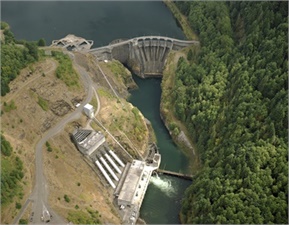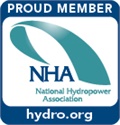Our Power Sources

Mayfield Dam
We serve nearly 181,630 people in Tacoma, University Place, Fircrest, Lakewood, Federal Way, Steilacoom, Joint Base Lewis McChord, portions of Fife and other areas of Pierce County as far south as Roy.
Though we use various power sources as needed, most of our electricity comes from clean, renewable hydropower, almost half of which is generated at our four hydro projects on four rivers in western Washington. Our projects include:
- Cowlitz River Project (Click here to sign up for our Cowlitz River Project email list).
- Nisqually River Project
- Wynoochee River Project
- Cushman Hydro Project (Click here to sign up for our Cushman Hydro Project email list).
We also maintain an Integrated Resource Plan to guide us in exploring all available power sources and conservation options. This analysis helps ensure we have enough power resources to meet our long-term needs.
To learn more, see the following:
- Watch a video about the use of clean, renewable hydropower energy in the U.S.
- Read our 2023 Source Report below.
2023 Source Report

National Hydropower Association
Tacoma Power produces or buys electricity from a number of resources. We are providing you with information about the fuel used to generate the electricity you used in 2023, the most recent numbers available.
The State of Washington requires that electric utilities provide this information to customers on a regular basis. The Washington State Department of Commerce, Energy Office, publishes the information, based on reports from electric utilities. View the report online here.
Our Power Sources in 2023
- Hydro Power: 75.34%
- Nuclear: 6.33%
- Wind: 11.23%
- Biomass: 0.04%
- Solar: 1.02%
- Unspecified: 6.04%
Tacoma Power’s fuel mix is nearly carbon-free.
Licensing and Watershed Management
To operate our dams, we must maintain licenses issued by the Federal Energy Regulatory Commission, which oversees hydroelectric projects across the country. These licenses contain provisions for:
- Fisheries programs, including hatcheries and the protection of native fish and their habitat.
- Wildlife programs to protect and enhance habitat.
- Parks and recreation areas near our reservoirs for public camping, swimming, fishing, nature watching, boating and day use.
- Cultural resource protection and education.

